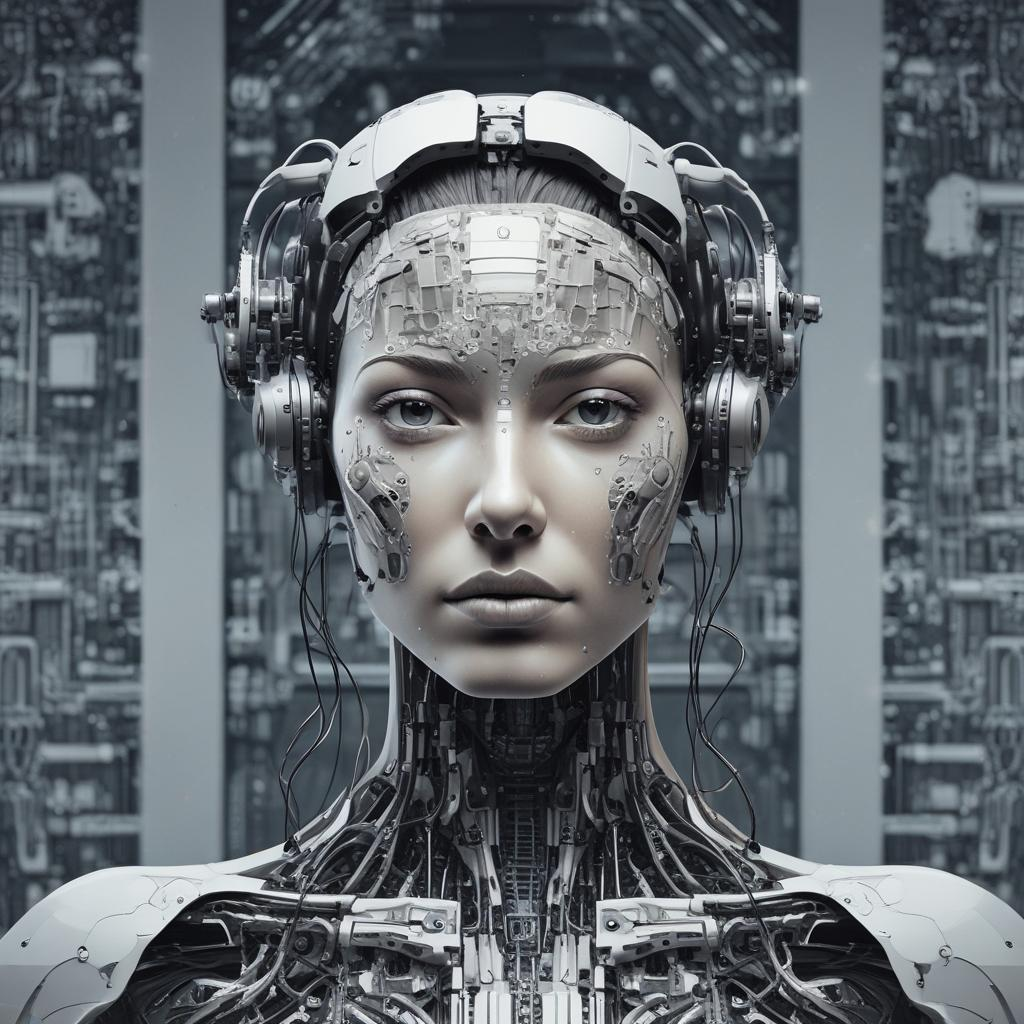The intersection of artificial intelligence (AI) and creativity represents a burgeoning field that explores how technology can mimic, augment, and expand the creative capacities of humans. From music and art to literature and beyond, AI's role in the creative industries is both transformative and controversial. The integration of AI tools in the creative process notifies a shift in traditional methodologies, sparking a unique synergy between human intuition and algorithmic processing. Here’s a look at how AI is blending with creativity and several key points that outline this intricate relationship.

1. Enhancing Creative Processes
AI can significantly accelerate and enhance the creative process by handling time-consuming tasks that can stifle creativity. For instance, in graphic design, AI-powered tools can automatically generate layouts, color schemes, and fonts, allowing designers to focus on more complex aspects of their projects. This not only speeds up the workflow but also helps in refining the output through rapid prototyping and iterations.
2. New Forms of Art
AI algorithms, such as those used in neural networks, have enabled the creation of new forms of art. These range from AI painting to music composition, where algorithms analyze vast amounts of data on existing artworks to create something entirely new and unique. This capability allows AI to be both a creator and a tool in the art-making process, pushing boundaries and challenging traditional definitions of artistry.
3. Collaboration Between AI and Artists
Many contemporary artists and creators see AI as a collaborative partner that brings new perspectives and capabilities to their work. AI can suggest modifications, predict trends, and offer alternatives that might not be immediately obvious to human creators. This symbiosis can lead to richer, more complex creative work that neither AI nor humans could achieve alone.4. Personalization at Scale
AI’s data-processing capability makes it an excellent tool for personalization, a trend that's becoming increasingly prevalent in fields like marketing, product design, and media creation. By analyzing user interests, behaviors, and engagement, AI can tailor content in real-time, enhancing the user experience and engagement considerably.5. Democratisation of Creativity
AI tools have democratized creativity by lowering the barriers to entry for many creative pursuits. With AI, individuals who lack the traditional skills or training in art, music, or writing can participate in creative activities. Tools like AI writing assistants and AI-driven design software enable users to produce work that resonates with professional standards, making creativity more accessible to a broader audience.6. Ethical and Authenticity Concerns
Despite the benefits, the use of AI in creative processes also raises ethical questions and concerns about authenticity. The debate revolves around issues such as the originality of AI-generated content and the potential for AI to replicate or steal styles from human artists without proper attribution. Navigating these concerns requires a thoughtful approach to integrating AI tools in a way that respects human creativity and the rights of creators.7. Impact on Creative Jobs
There is a significant discourse around the notion that AI might replace human artists and creative professionals. While AI can automate certain tasks, it is more about shifting the nature of creative jobs rather than completely displacing creative professionals. Emphasizing collaboration between humans and AI is essential, as is training for creative professionals to leverage AI tools effectively.8. Virtual and Augmented Reality
Virtual Reality (VR) and Augmented Reality (AR) provide platforms where AI enhances the creative capabilities to immersive extents. AI can help in creating dynamic and adaptable environments that respond in real-time to users’ interactions, leading to highly personalized VR and AR experiences. This not only alters how creators conceive ideas but also how audiences experience them.9. Education and TrainingAs AI becomes a standard tool in the creative sectors, educational and training programs are increasingly integrating AI-focused curricula. This evolution is preparing future creators to effectively harness AI in their crafts, ensuring a workforce that is proficient in both traditional creative skills and advanced technological tools. Education institutions are pivotal in shaping how emerging creators perceive and utilize AI in their work.10. Future Prospects
The future of AI in creativity looks expansive. AI’s integration into more sophisticated areas of human creativity, such as strategic planning and conceptual development, is likely. Furthermore, the exploratory use of AI to understand and replicate emotional and aesthetic human responses holds potential for new creative frontiers. As AI technology evolves, so too will its role in augmenting human creativity, possibly leading to new forms of art, entertainment, and design that are currently unimaginable.
- AI accelerates creative workflows by automating mundane tasks.
- It fosters the creation of novel art forms through deep learning experiments.
- AI enables personalized experiences in marketing, product development, and media.Intensive>
- AI tools help in expanding creative participation across different demographics.
- Striking a balance between AI contributions and human creativity raises ethical concerns.
- Continuous learning and adaptation are required for creative professionals to effectively utilize AI.
- New platforms like VR and AR are exploited through AI to enhance user interactivity and creative expression.
- Education systems are adapting to include AI in creative disciplines, preparing students for future challenges and opportunities.
- The evolution of AI promises even more deeply integrated tools that may revolutionize creative industries.


.jpg)






.jpg)



0 Comments